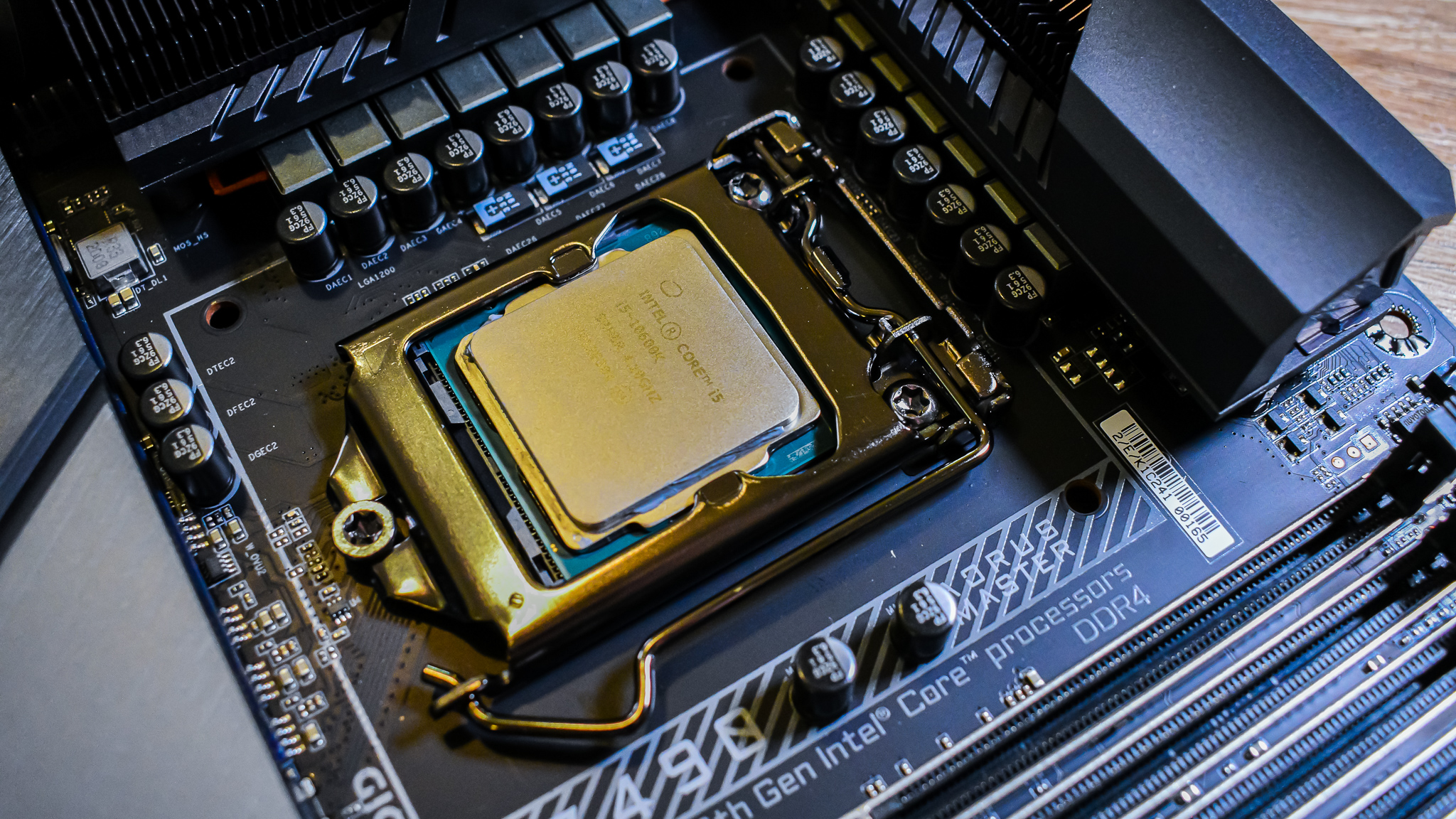Intel steals CPU market share from AMD for first time in 3 years – is the desktop tide turning?
New figures are eye-opening, as Intel makes gains with laptop and desktop CPUs

Intel took back processor market share from AMD in the final quarter of 2020 not just in terms of mobile CPUs for laptops, but also on the desktop, very much against the grain of recent times, according to a new report.
Mercury Research has shared its stats on the PC processor market for Q4 of 2020, during which AMD may have lost overall market share to Intel, but it still made strong gains – thanks to the major growth spurred on by the spike in sales due to the ongoing pandemic (and more folks buying hardware as a result, with working from home becoming a much more common thing).
- Here are the best gaming PCs
- We’ve picked out all the best processors
- And check out the best motherboards
According to Mercury Research, the x86 CPU market grew by a massive 20.1% in Q4. AMD, however, dropped to a 19.3% market share on the desktop, down on the previous quarter (where it stood at 20.1%). Even so, AMD was still up year-on-year, compared to its 18.3% tally for the final quarter of 2019.
And of course, given the huge traction in the overall market, AMD was still making a lot more money, and as we saw with the company’s own figures, it made a killing in Q4 (with revenue up over 50% compared to the same quarter in 2019, making Q4 2020 the best quarter AMD has ever had, in fact).
So there’s nothing bad about AMD’s performance here – far from it – but nonetheless it’s a bit of a shock to see Intel gain market share in desktop chips for the first time in three years.
Stock shocks
Why has this happened? The theory is that AMD’s Ryzen 5000 processors, while definitely hot property, have been marred by stock issues as we’ve seen, so the company hasn’t sold as many as it could. Some of the Ryzen 3000 range have struggled with supply problems, too, notably popular budget models like the 3300X or 3100, which are now selling at hugely inflated prices on eBay.
Seemingly Intel was able to capitalize on all this, and further strengthen its own hand in turn by applying some tasty discounts to its CPUs in Q4.
Get daily insight, inspiration and deals in your inbox
Sign up for breaking news, reviews, opinion, top tech deals, and more.
As Tom’s Hardware (which spotted the figures) further observes, Intel has made it clear that its supply of cheaper processors – the likes of low-end models that find homes in affordable Chromebooks – improved towards the end of 2020, and PC processor unit shipments were up no less than 33% during Q4. Obviously that, and the fact that AMD was struggling with supply issues, has all worked in Intel’s favor.
There’s also the possibility that this trend might continue, given that AMD has been making noises about the ‘tightness’ of supply when it comes to production of its PC hardware including CPUs and graphics cards. AMD has even mentioned the low-end of the PC market as a weak spot particularly affected by supply constraints, so that could remain a window of opportunity for Intel in the near future.
Don’t forget that Intel has new desktop processors on the horizon, as well, in the form of Rocket Lake. The 11th-gen range is expected to land in March, with promising performance levels in the cards going by some leaked benchmarks, and the prospect of Intel perhaps even pitching the price of this new generation more competitively (though the latter speculation seems a stretch, admittedly).
As mentioned at the outset, Intel also gained market share in laptops, although that’s a less surprising development given that this is the arena where Intel is traditionally dominant. Still, AMD has been taking back share in recent times, as we’ve seen in several reports, but not in Q4 according to Mercury Research, where it slipped to 19%, compared to 20.2% the previous quarter. Again, though, AMD still remains up year-on-year, as it was on 16.2% in Q4 of 2019.
AMD revealed some powerful new Ryzen 5000 mobile CPUs at CES 2021 last month, but it’ll probably be a while before these chips are appearing in meaningful quantities in laptops; especially given the aforementioned supply issues. Intel, meanwhile, has that improving low-end supply by all accounts, not to mention some competitive new Tiger Lake mobile processors.
All of which underlines the importance for AMD to get its chip production issues sorted out – and that goes for graphics cards, as well, although it’s the company’s CPU momentum which remains critical, let’s be honest.
- Check out the best PC components for your rig
Darren is a freelancer writing news and features for TechRadar (and occasionally T3) across a broad range of computing topics including CPUs, GPUs, various other hardware, VPNs, antivirus and more. He has written about tech for the best part of three decades, and writes books in his spare time (his debut novel - 'I Know What You Did Last Supper' - was published by Hachette UK in 2013).